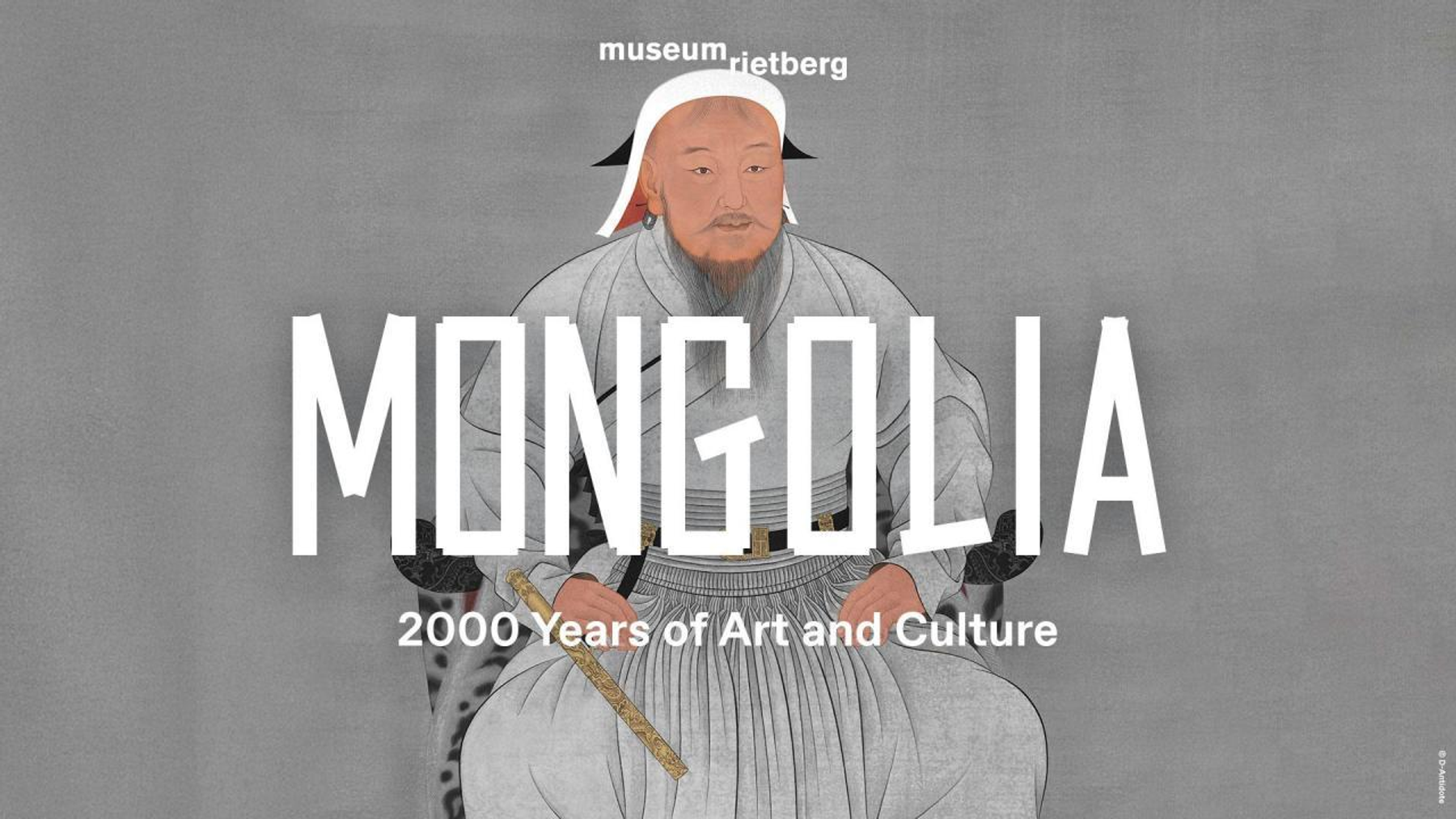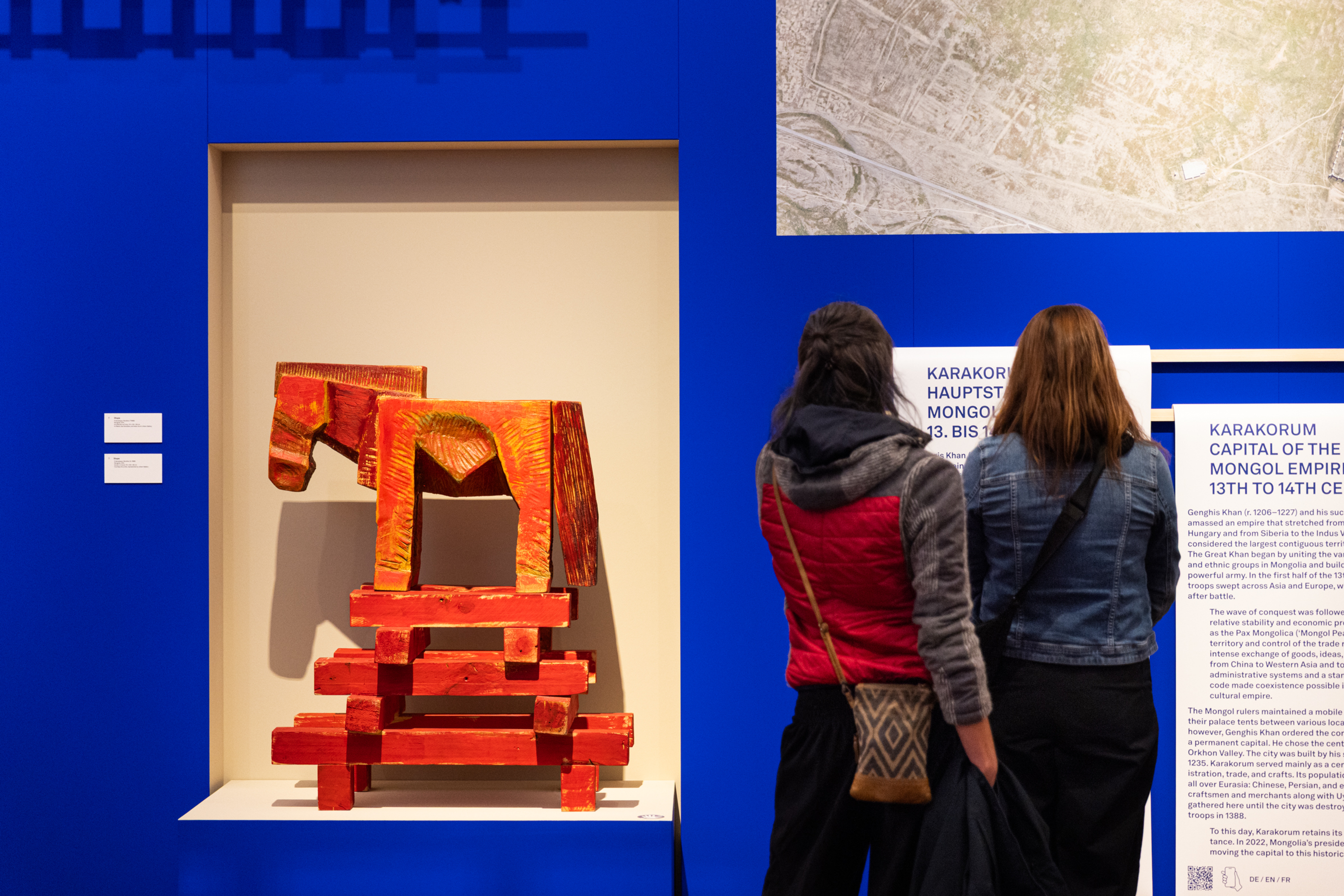LKHAM Gallery Brings Mongolian Contemporary Art to Switzerland at the Museum Rietberg

Inside Mongolia
October 28, 2025
October 28, 2025

LKHAM Gallery, the first international gallery promoting Mongolian contemporary art, is honored to announce its landmark collaboration with the Museum Rietberg in Zurich, Switzerland — the country’s largest and most prestigious institution — for the first-ever exhibition “Mongolia – A Journey Through Time”. Running from 24 October 2025 to 22 February 2026, this marks the first major exhibition in Switzerland dedicated to Mongolia.
The exhibition unfolds in two parts: historical and contemporary. For the historical section, the Museum Rietberg has partnered with the Chinggis Khaan National Museum, the Kharakhorum Museum, the Mongolian Academy of Sciences, and other cultural institutions to showcase archaeological treasures and ancient artifacts. Meanwhile, LKHAM Gallery serves as the exclusive curatorial partner for the contemporary art section, presenting 53 artworks by 13 of Mongolia’s most compelling artists across painting, sculpture, installation, video, and mixed media. All participating artists are professionally represented by LKHAM, which takes great pride in presenting these influential figures and celebrating their work on a global stage.

Located in the heart of Ulaanbaatar, LKHAM International Contemporary Art Gallery is devoted to promoting Mongolian contemporary art to global audiences. Representing both emerging and mid-career artists working across diverse media, the gallery cultivates meaningful dialogue between artists, audiences, and communities through regular exhibitions, publications, and inclusive creative programs.
Last year, in 2024, the gallery made cultural history by successfully exhibiting at the Asia Now Paris Art Fair, receiving high praise and positive reviews for Mongolian art in Paris. This year, the gallery aims to reach a larger audience in Switzerland, creating a bridge between Switzerland and Mongolia through art and culture.

The Selection and the Artists: Mongolia Today
This carefully curated selection of Mongolia’s leading and emerging artists captures the country’s dynamic contemporary art scene, in relation to urbanism, where nomadic heritage intersects with rapidly urbanizing society, reflecting Rietberg’s focus on the tension between Mongolia’s traditions and its modern cities.
Anchoring the exhibition, Erdenebayar Monkhor reinterprets his iconic horse imagery – long a symbol of freedom and resilience of nomads — in sculptural stillness that speaks to the shifting realities of urban life. Baatarzorig Batjargal layers political commentary, pop culture, and spirituality in rich visual language to mirror Mongolia’s modern contradictions. Lkhagvadorj Enkhbat portrays marginalized urban figures and forgotten spaces of Ulaanbaatar with empathetic realism, while Odmaa Uranchimeg merges Buddhist iconography with modern abstraction. Gerelkhuu Ganbold reimagines folklore and historical motifs through Mongol painting technique, reflecting the tension between urbanization and fading traditions, and Nyam-Ochir Oyunpurev revitalizes traditional calligraphy into expressive compositions celebrating Mongolia’s cultural continuity.

Distinctive contributions from Azjargal Davaadorj, Amarsanaa Galmandakh, Bagi Max, Davaanyam Delgerjargal, Nomin Tsetsegmaa, Javkhlan Ariunbold, and Munkhjargal Jargalsaikhan complete a multifaceted portrait of contemporary Mongolian art.
Together,
these artists form a living bridge across centuries — connecting the empire
that once shaped continents to modern Mongolia, forging its global identity.
Source: LKHAM Gallery
Comment